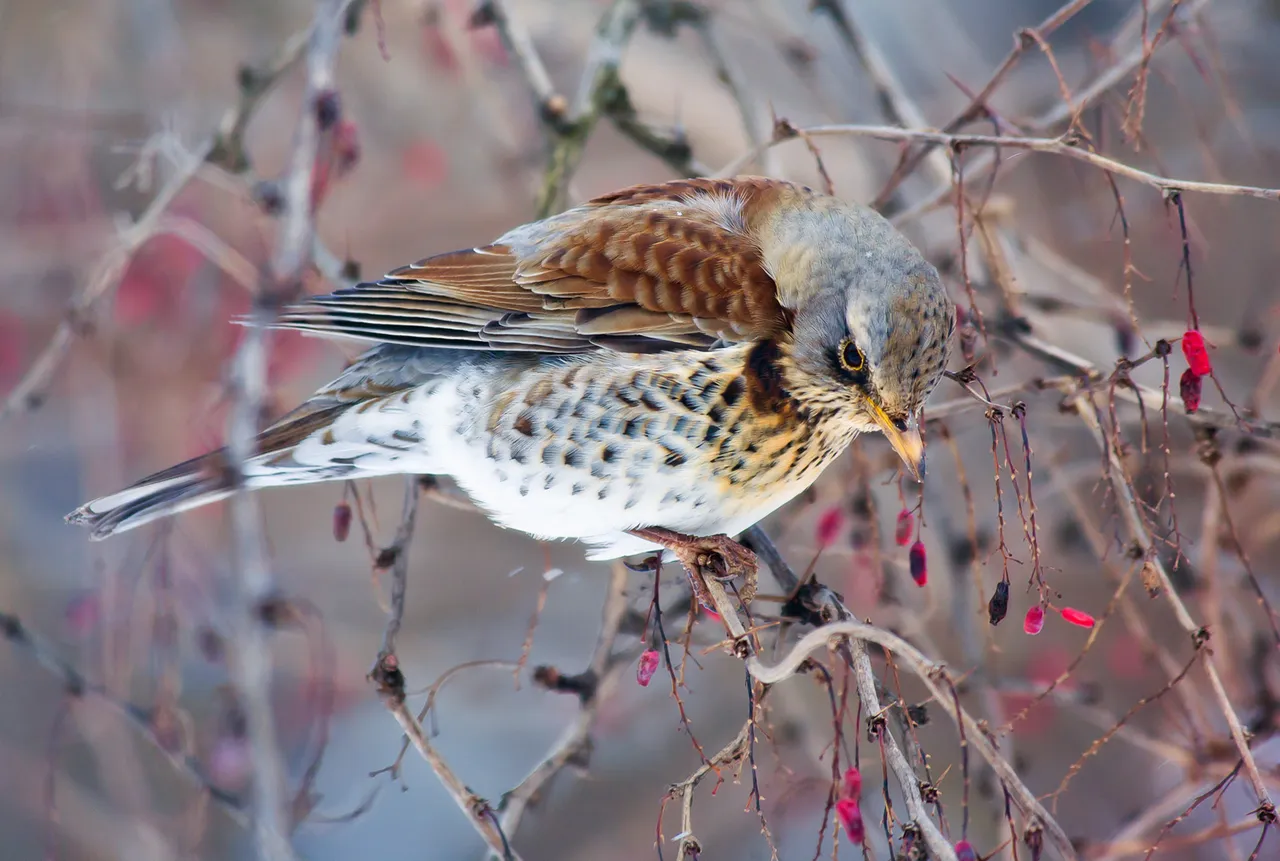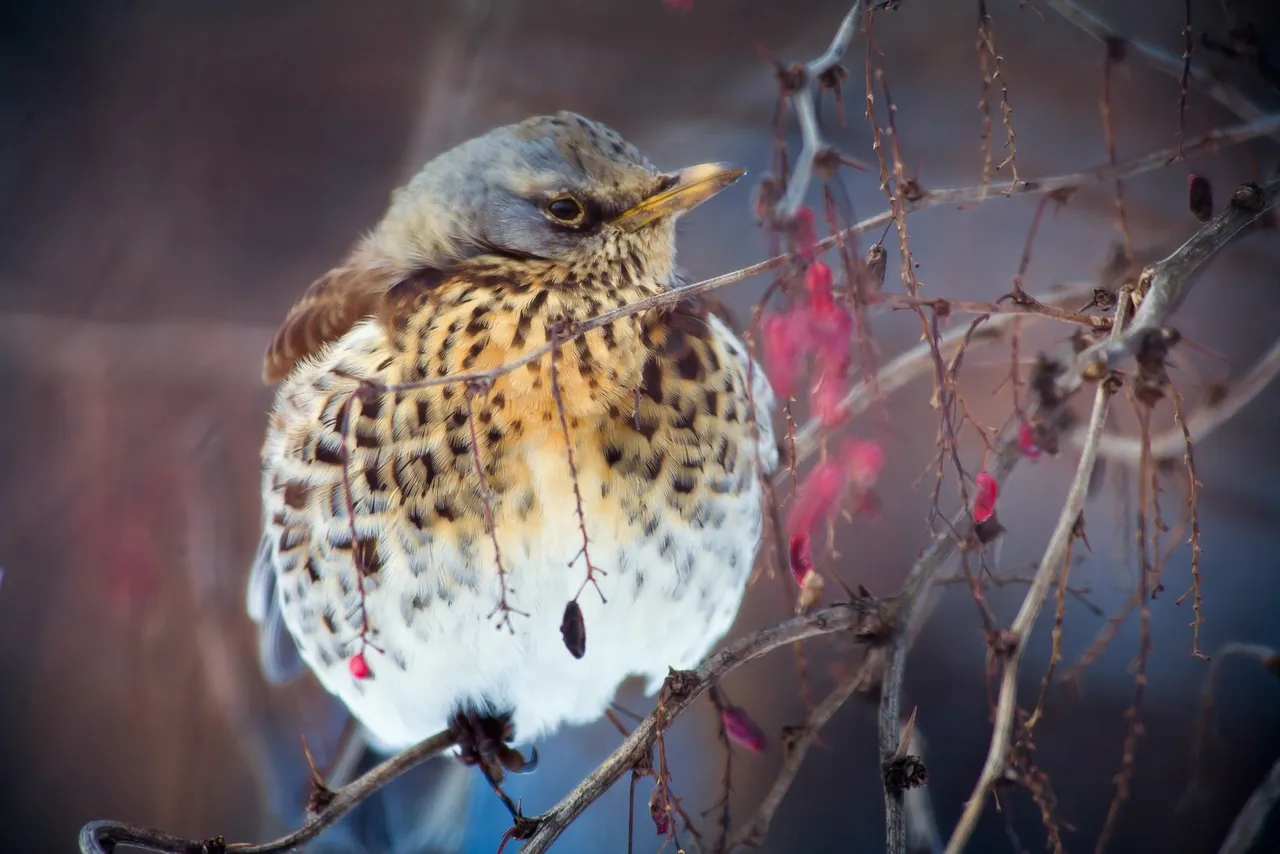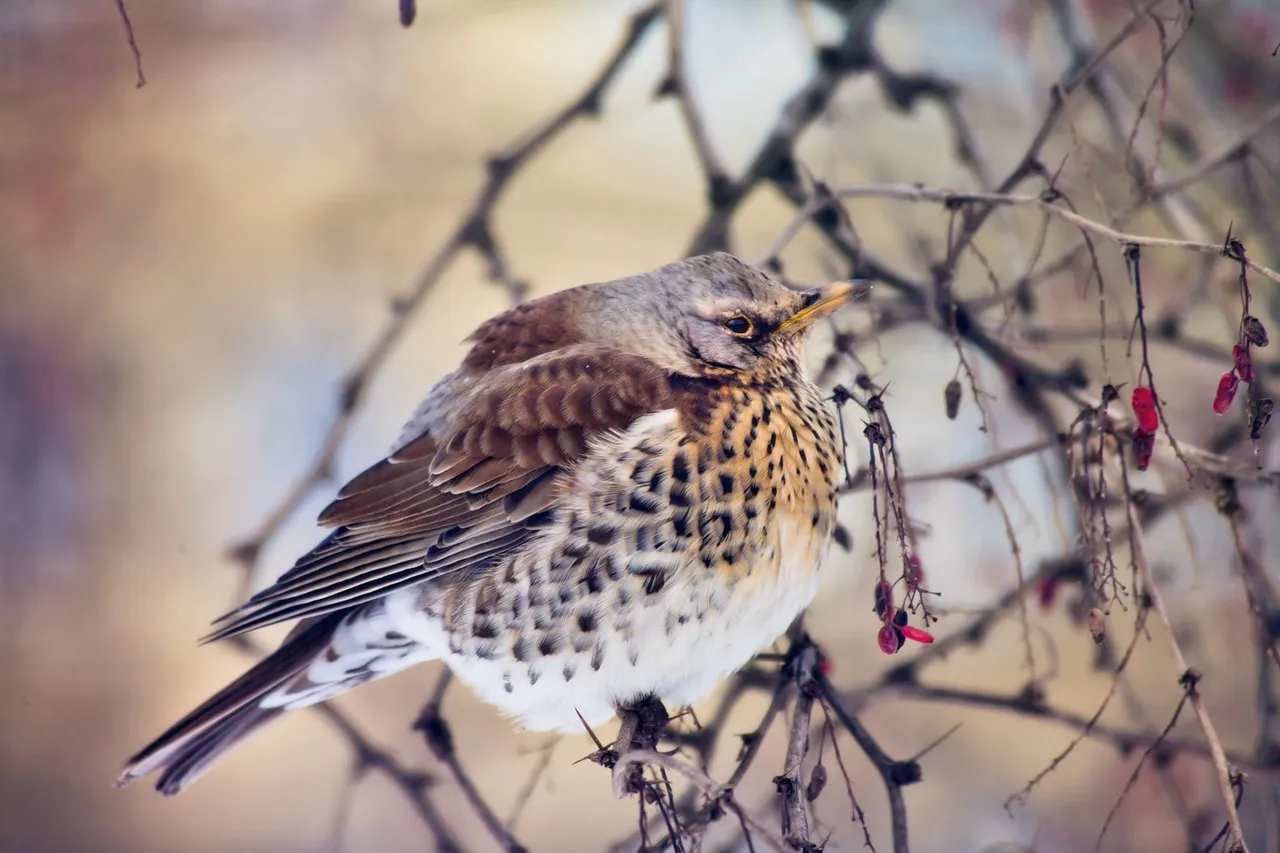Turdus pilaris
Classification
The fieldfare (Turdus pilaris) is a member of the thrush family Turdidae.
Classification:
- Kingdom: Animalia
- Phylum: Chordata
- Class: Aves
- Order: Passeriformes
- Family: Turdidae
- Genus: Turdus
- Species: T.pilaris
Common Appearance
You may mismatch Fieldfare with another relative specie - Mistle Thrush (as I did, getting a wrong identification at first - thanks to @dannewton who corrected me!). Theres a number of clues... Check this link to find out what details to look at. Fieldfare are superficially similar to mistle thrush in their general shape and attitude — but again there are distinctive features that make them readily identifiable in most situations.
Appearance:
A large and long-tailed thrush. White belly. Slate grey lower back, rump and head. Brown upper back and yellow to light brown buff breast with black spots. The all dark black tail contrasts with the grey rump.
- Length: 25cm, wingspan: 39-42cm.
- Body: different colours, dark and grey to white, yellow and brown.
- Eyes: Black
- Dominant visible characteristics: spotted yellowish-brown breast.
- Sound: Very vocal. Scolding call a hard "check", often given in decelerating series. Contact call in migration a soft, pleasant and buzzy "weet". Song a mix of dry contact calls; "trrrt trrrrt", and high pitched, drawn out, chattering improvisations. Typically bursts into continuos, squeaky chattering at takeoff.
View from the breast.
Places of Spread
Its main habitats are in the north and middle of Europe and Asia. Some of the birds are sedentary, some are nomadic. Scandinavian fieldfare, like a number of Central European ones, fly to the south for the winter, primarily to the south and west of Europe. It breeds in woodland and scrub in northern Europe and across the Palearctic.
It is strongly migratory, with many northern birds moving south during the winter. It is a very rare breeder in the British Isles, but winters in large numbers in the United Kingdom, Southern Europe, North Africa and the Middle East.
The fieldfare differs from other thrushes by its way of life. Most of the birds gather in medium-sized colonies (up to 30-40 pairs). They prefer parks and forest edges, located closer to meadows. In dense forests, the fieldfare does not occur. It can be seen both in the urban environment and in the forest in the wild. The nesting period lasts from April to July.
Diet
It is omnivorous, eating a wide range of molluscs, insects and earthworms in the summer, and berries, grain and seeds in the winter.
In winter, flocks of fieldfare come to feast on ripe berries (rowan, hawthorn, sea buckthorn, dog rose, holly, yew, juniper, barberry, etc.). If a rowan tree grows nearby, this is a convenient place to track it down to take a photograph. (I never noticed them coming to the hand-made feeder stations). In my case, I found this lonely fieldfare having a dinner at barberry bush.

Fieldfare feeding itself with barberry.
Peculiarities and Rarity
Every winter our resident blackbirds, song thrushes and mistle thrushes are joined by an influx of visiting northern European thrushes: fieldfare and redwing. The birds usually start to arrive from early October, and stay until early March… with some lingering a little later. Also I cant but note that Fieldfare arent shy bids, like tits or magpies -- they let for observer to come at a very close distance. (In my case, I was allowed to come up literally at two steps distance - after that the bird didnt fly away, just moved to another branch, restoring the previous minimum distance). The fact that these birds are not shy is super cool for photography!
Thrushes defend themselves by diving down on enemies and dousing them with shit droppings. People will face massive “shelling” if they come to the colony.
Discovery Statistics
- Date: 2021-02-11.
- Location: St.Petersburg, Russia (GPS 59.9668098, 30.3072215).
This was my 1st encounter with this bird, where I documented it and was able to pay attention to identification.
Information Usage & Copyright Declaration:
The information provided in this post is provided based on my own observations. The pictures used in this post are original and taken by myself, @qwerrie, with a Canon 5D camera. I allow DNA to use the images and the information provided for DNA work within their publicly visible projects.DNA - Densifying Nature-Appreciation




